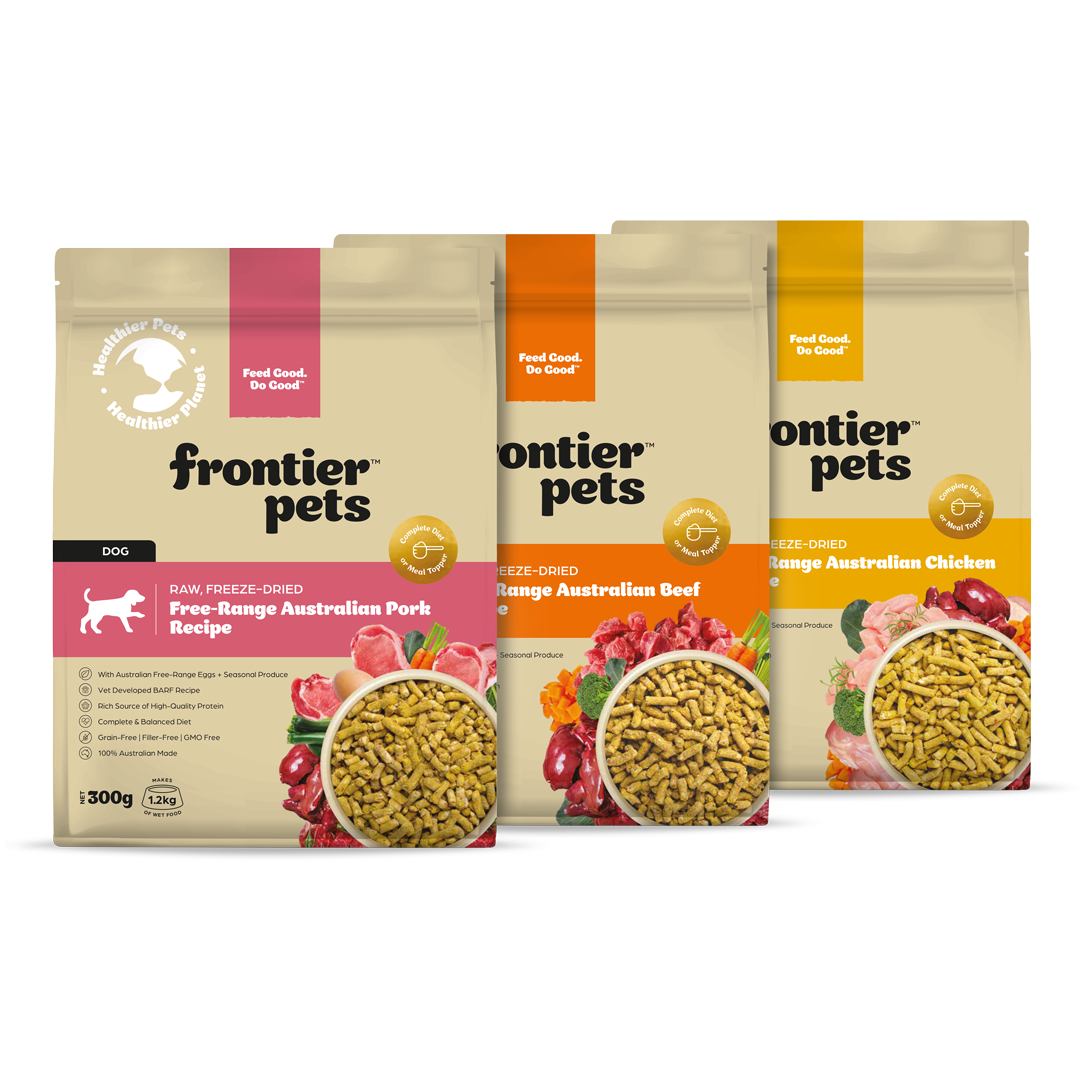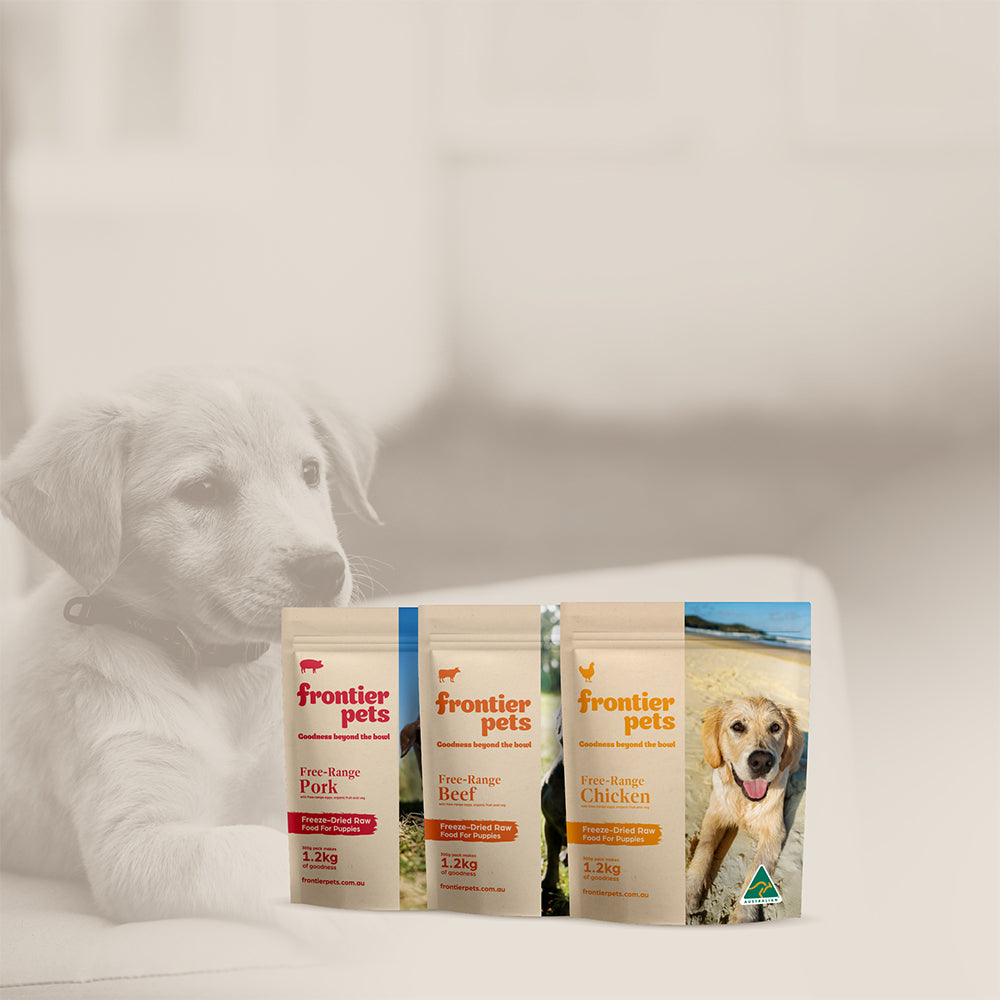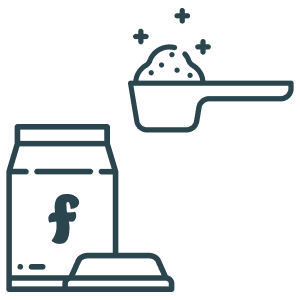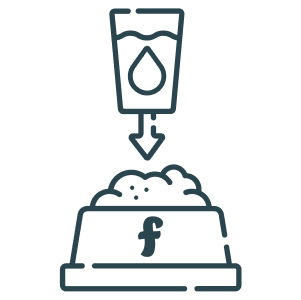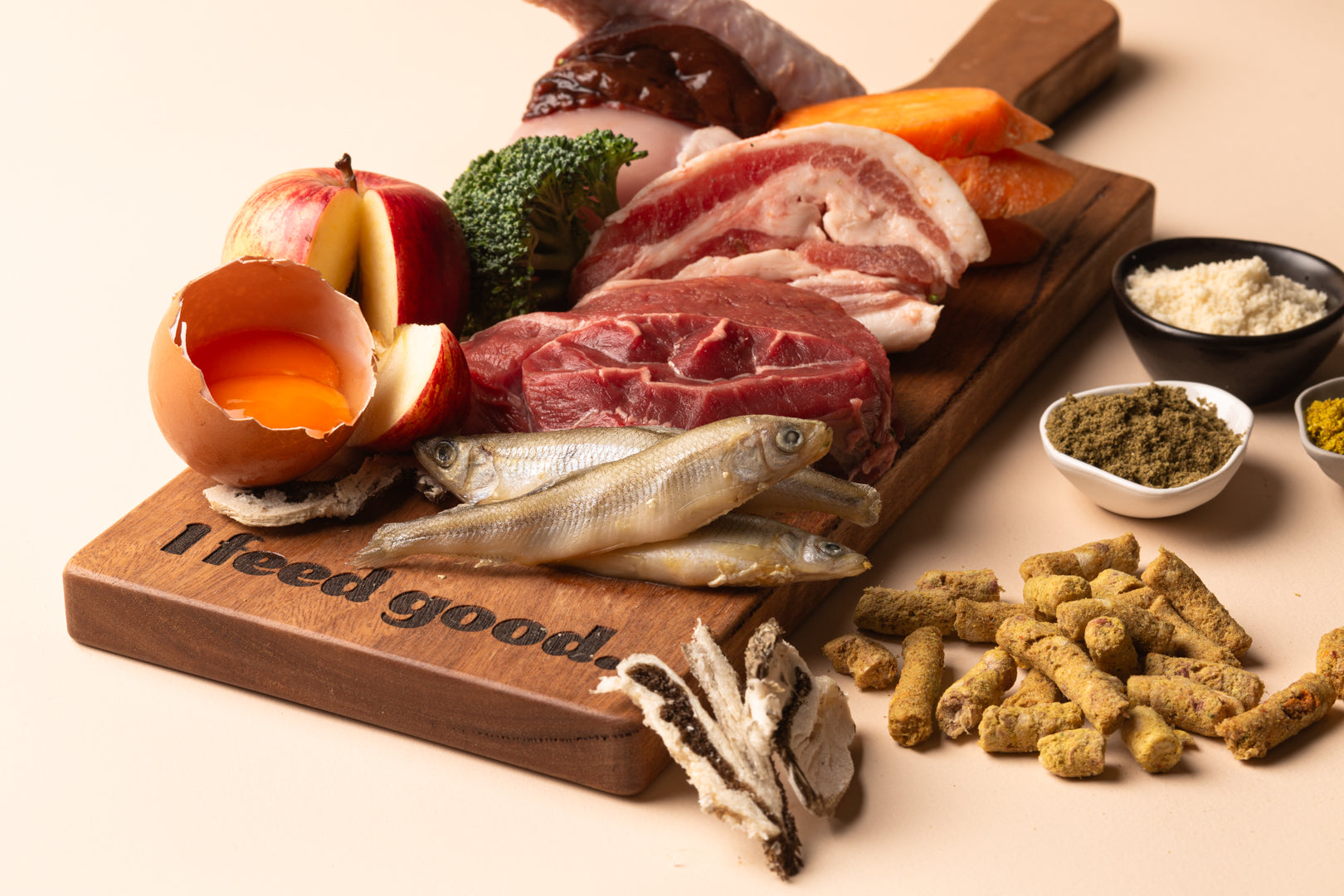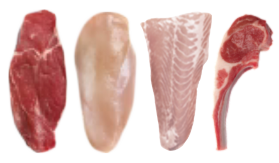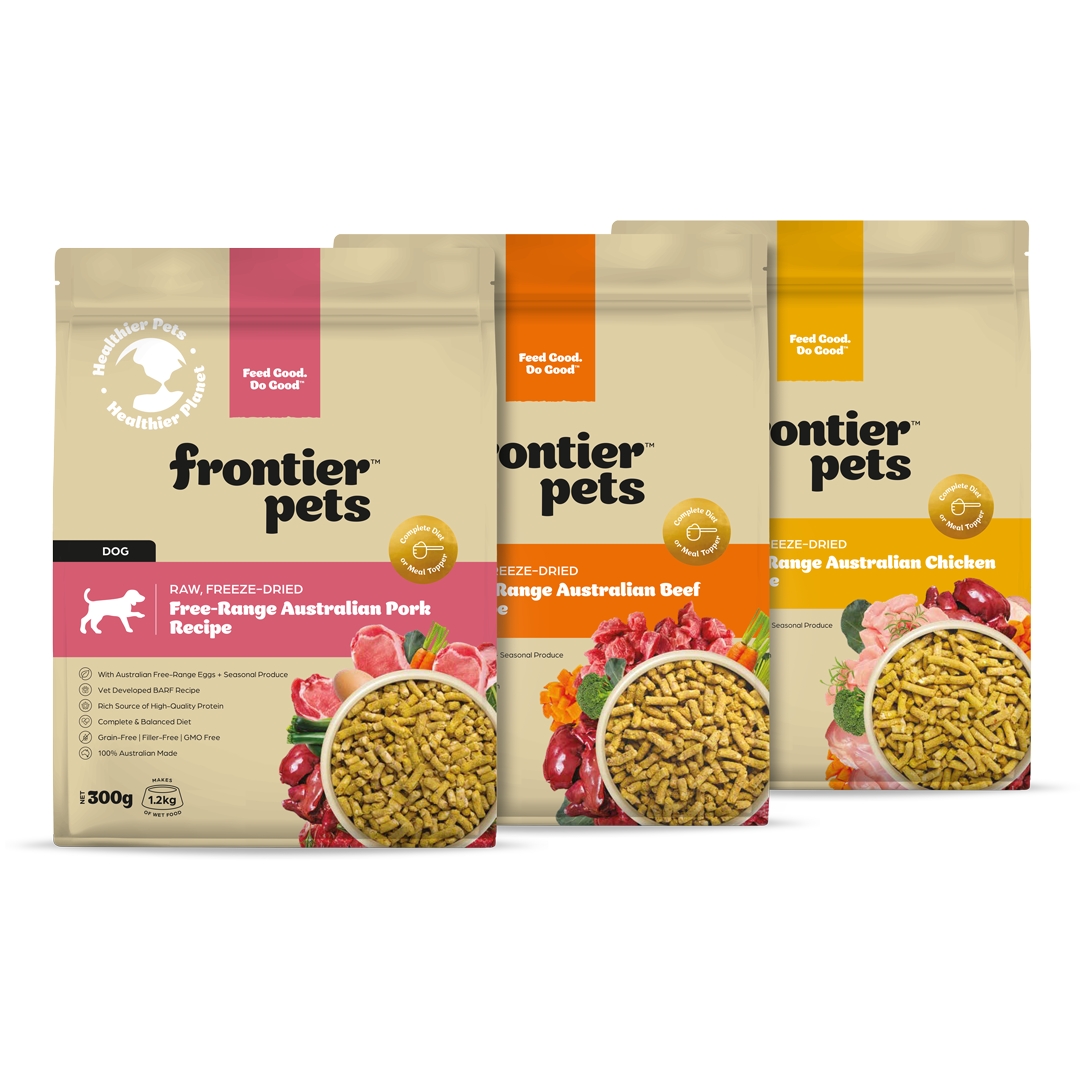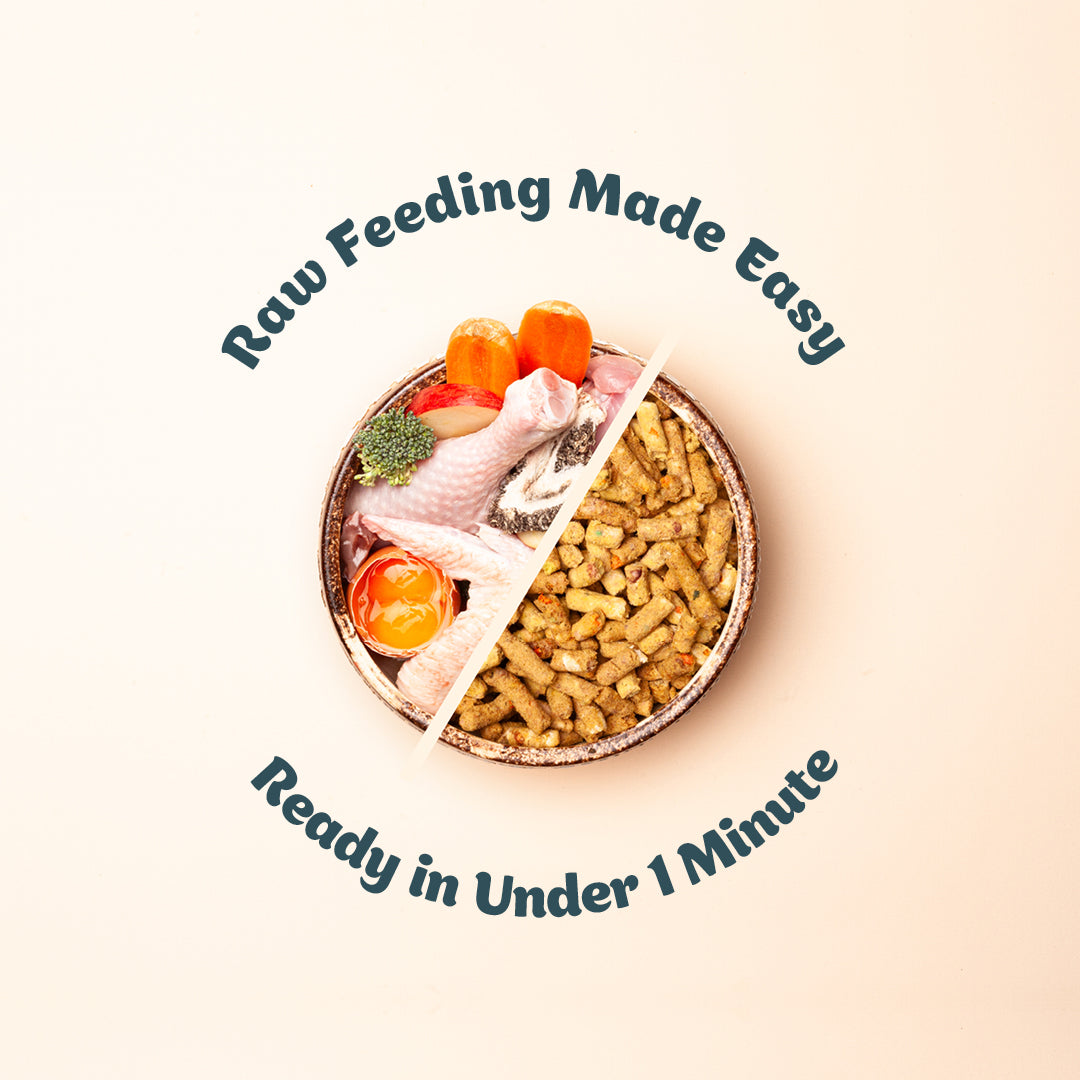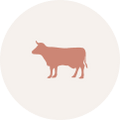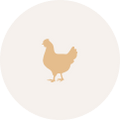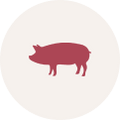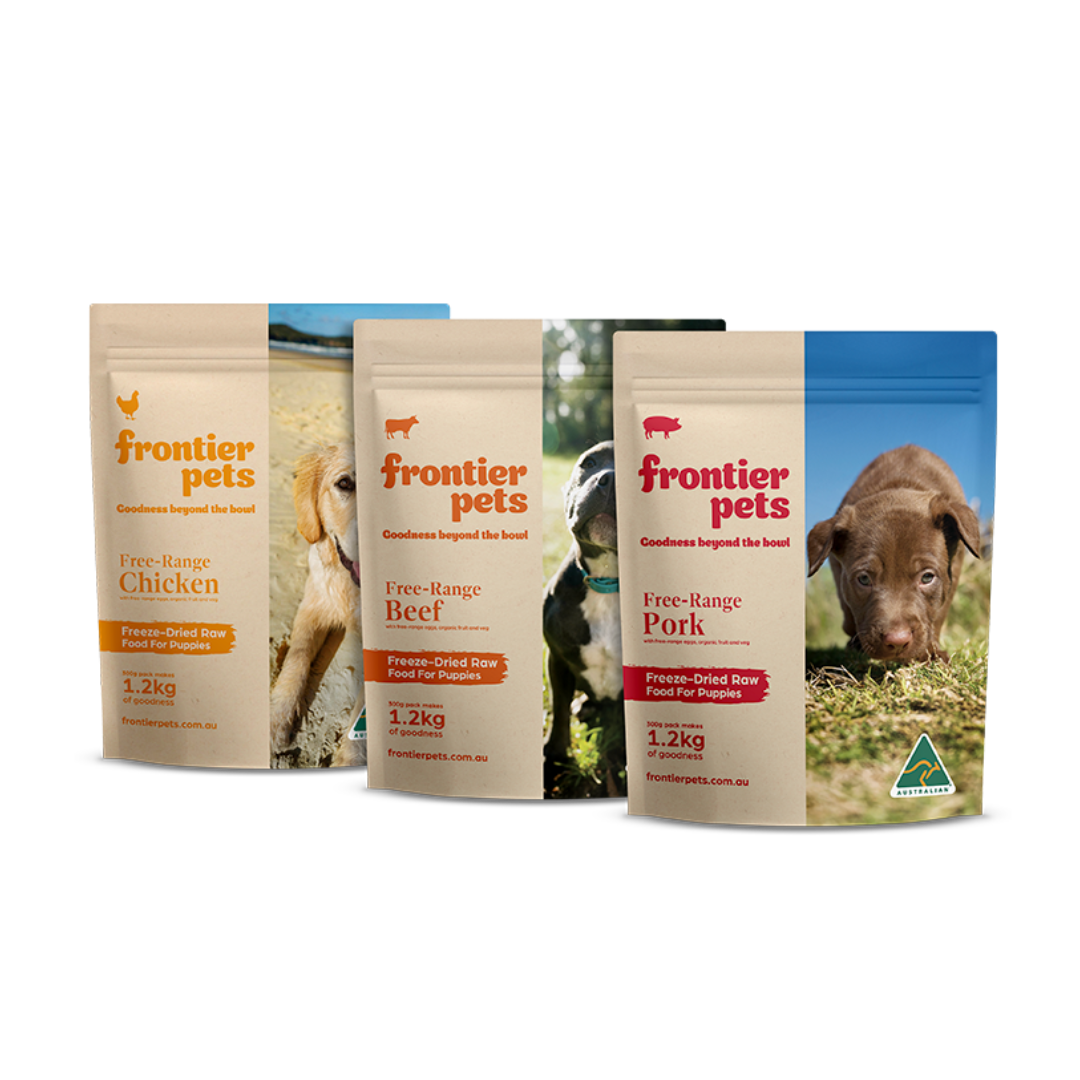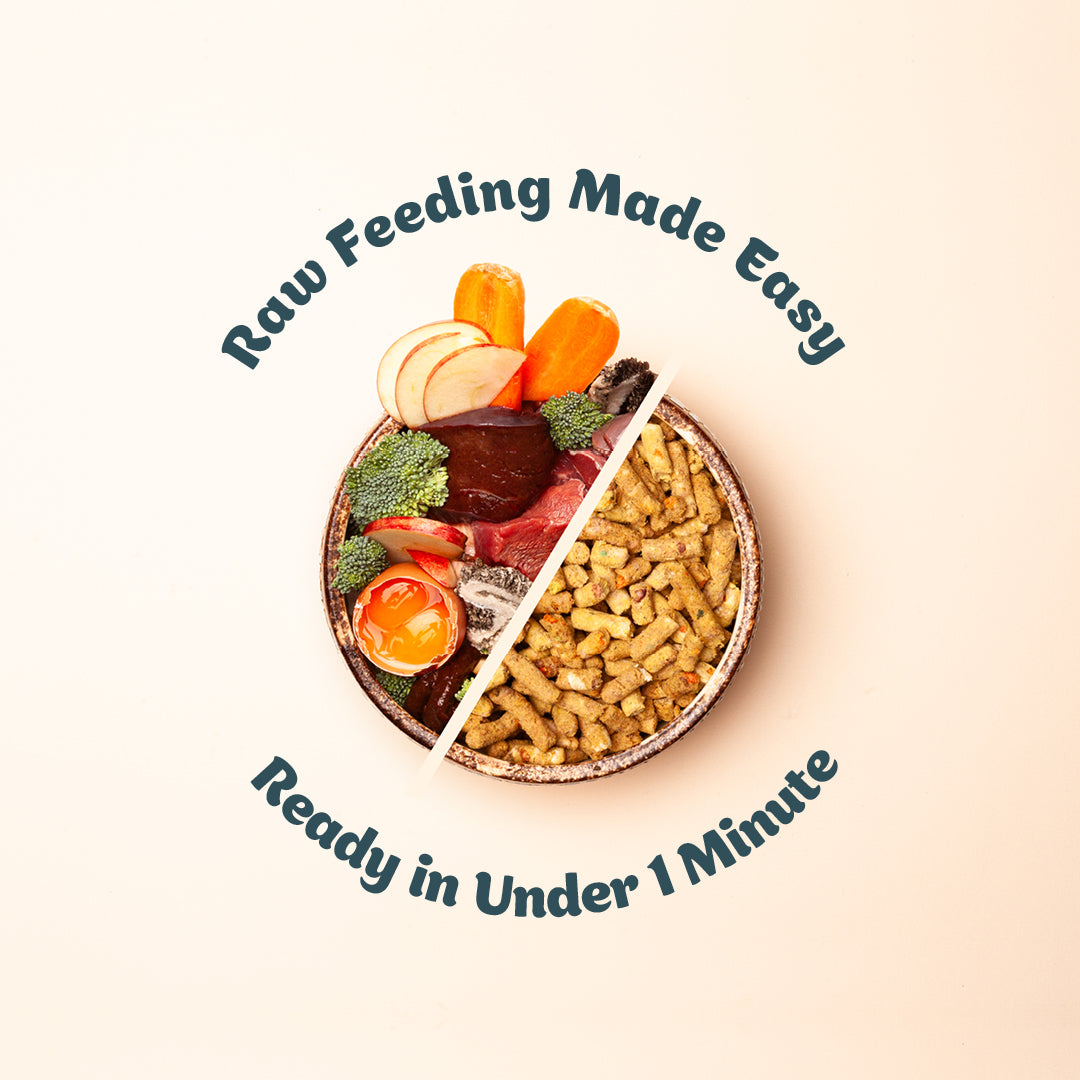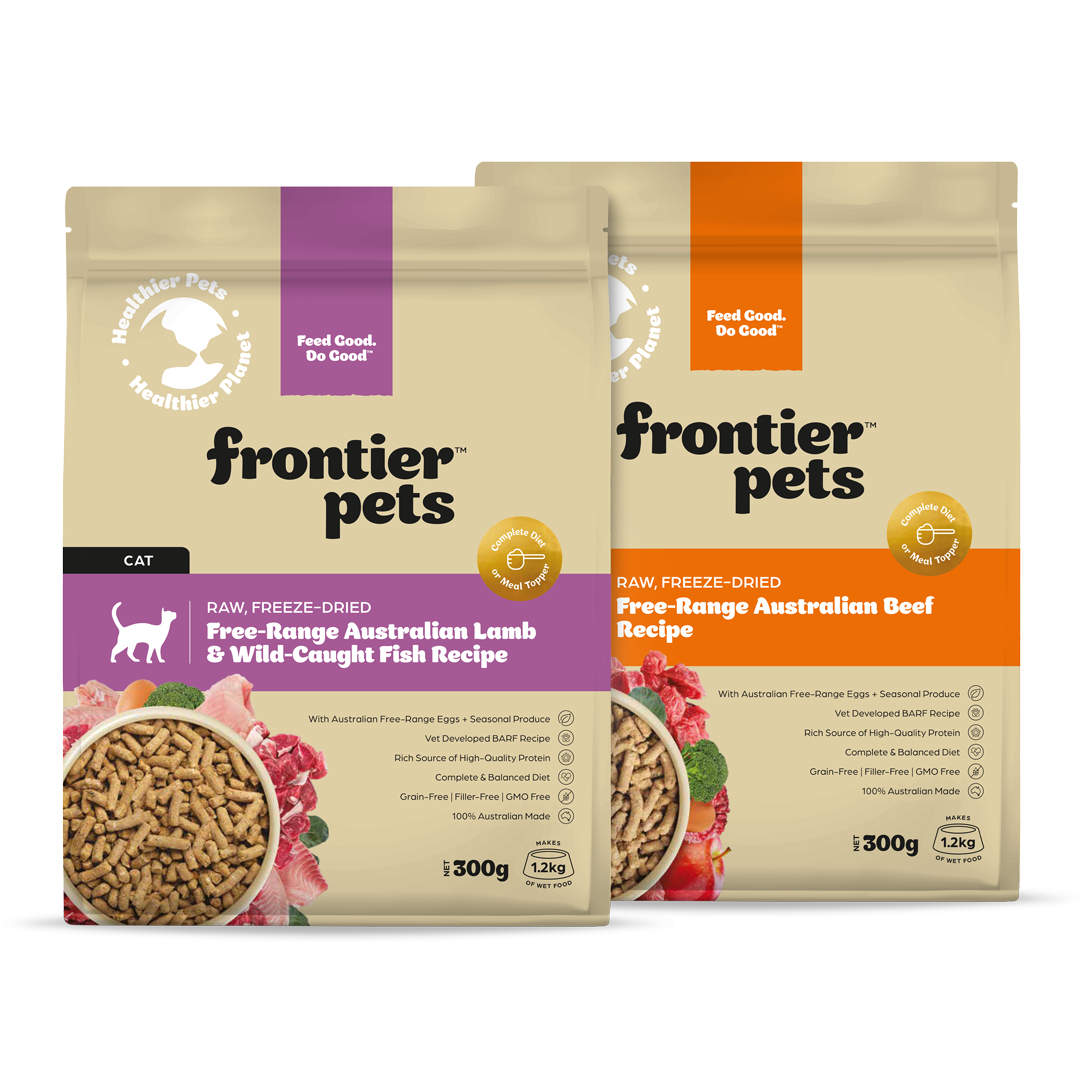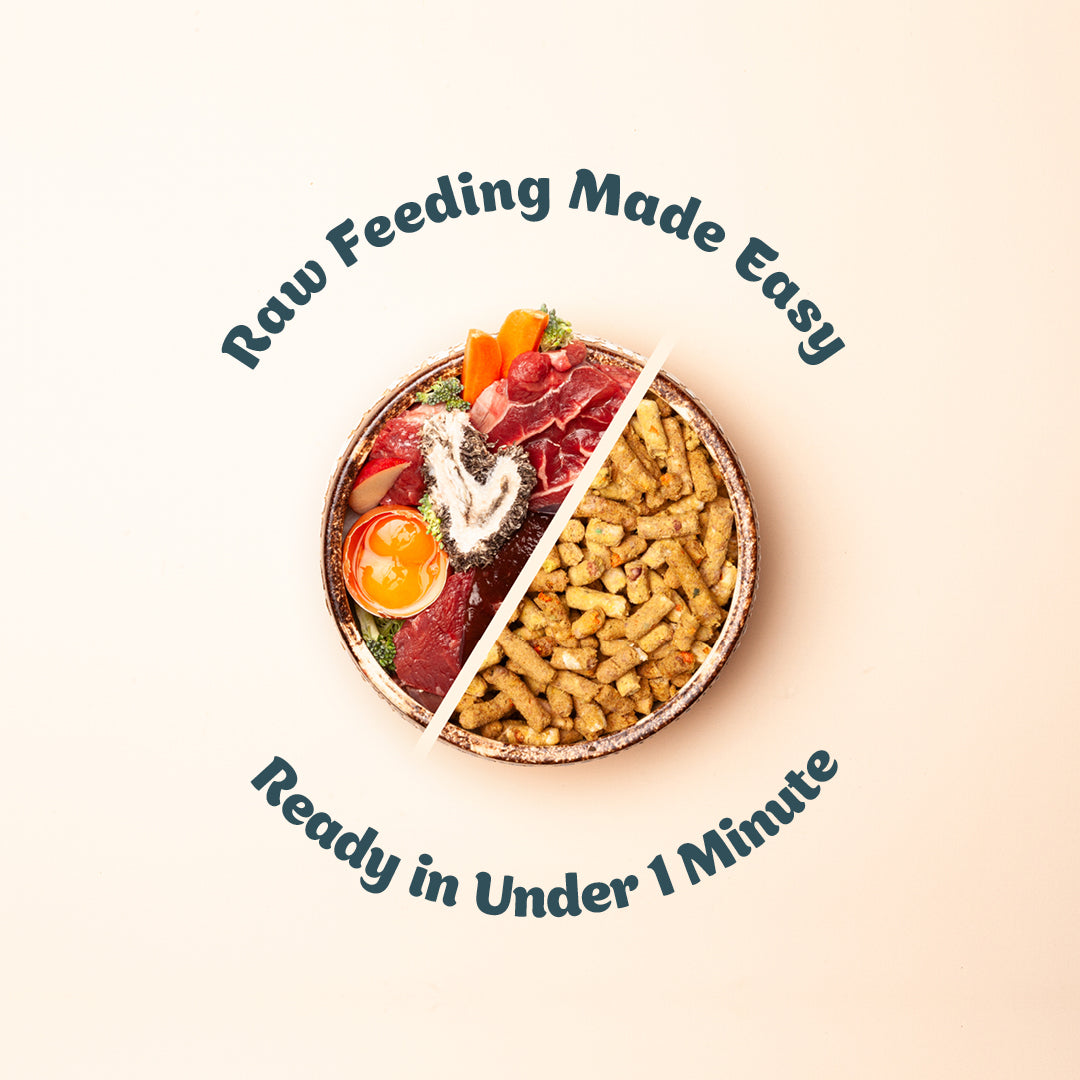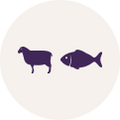Choose options


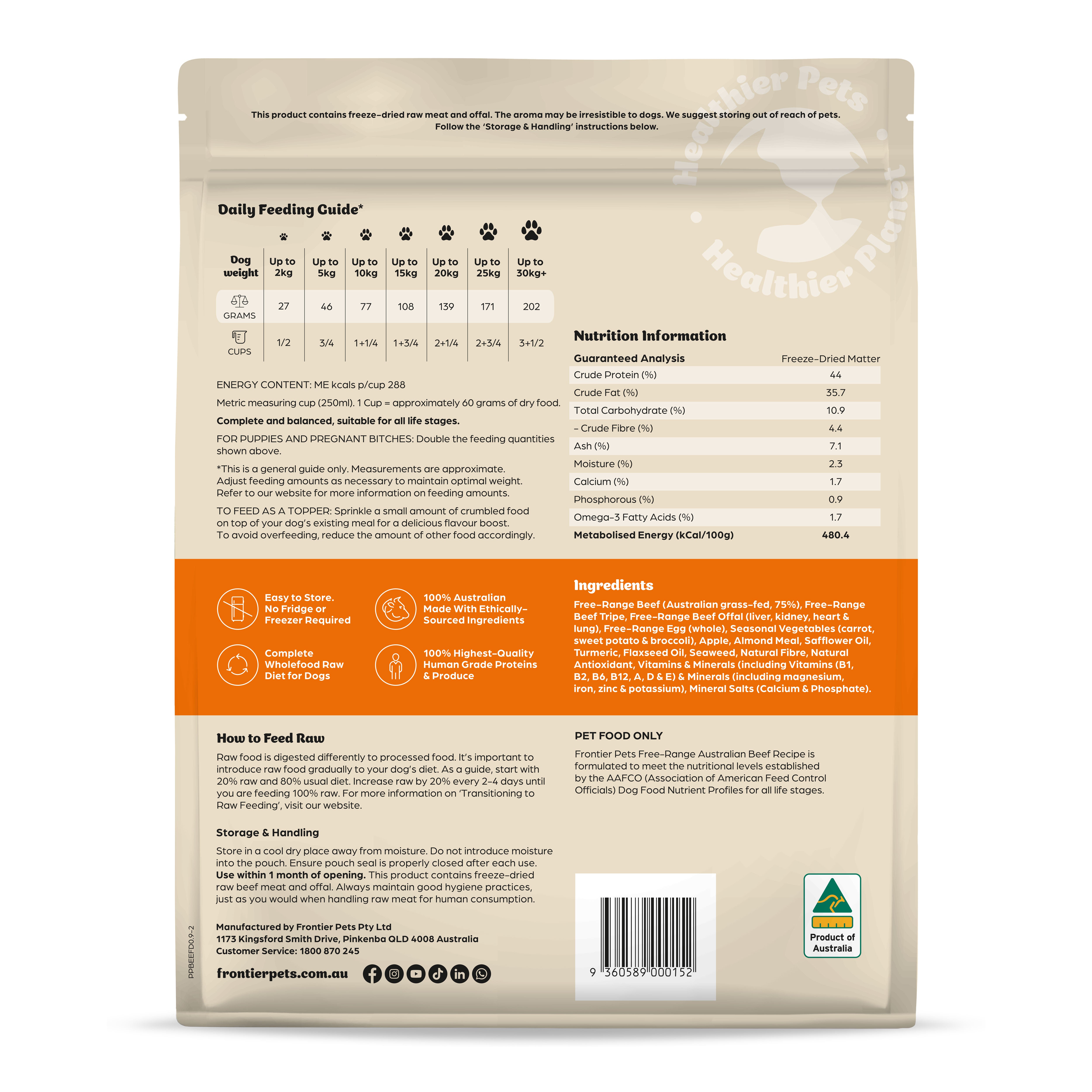



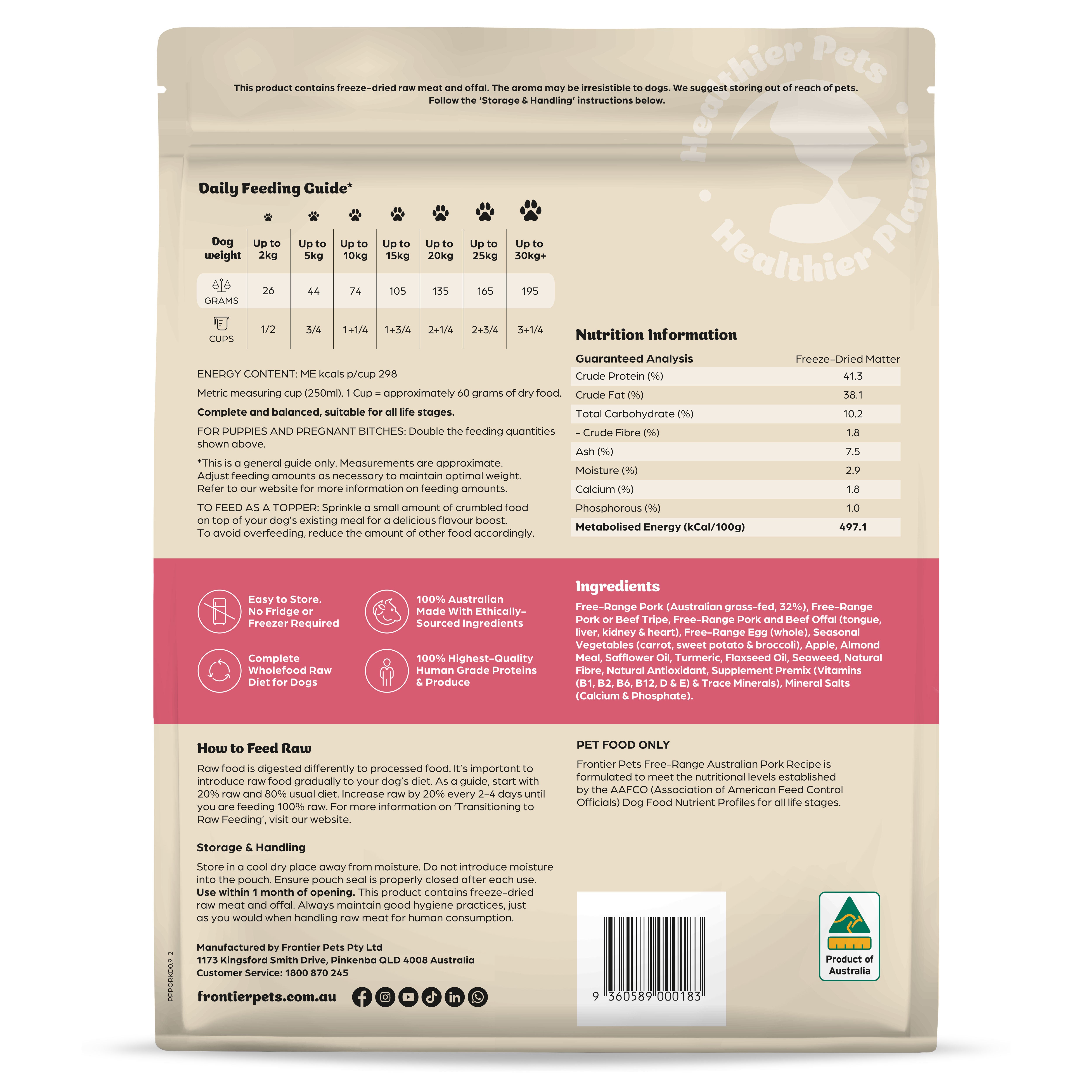
Tell us more about your dog
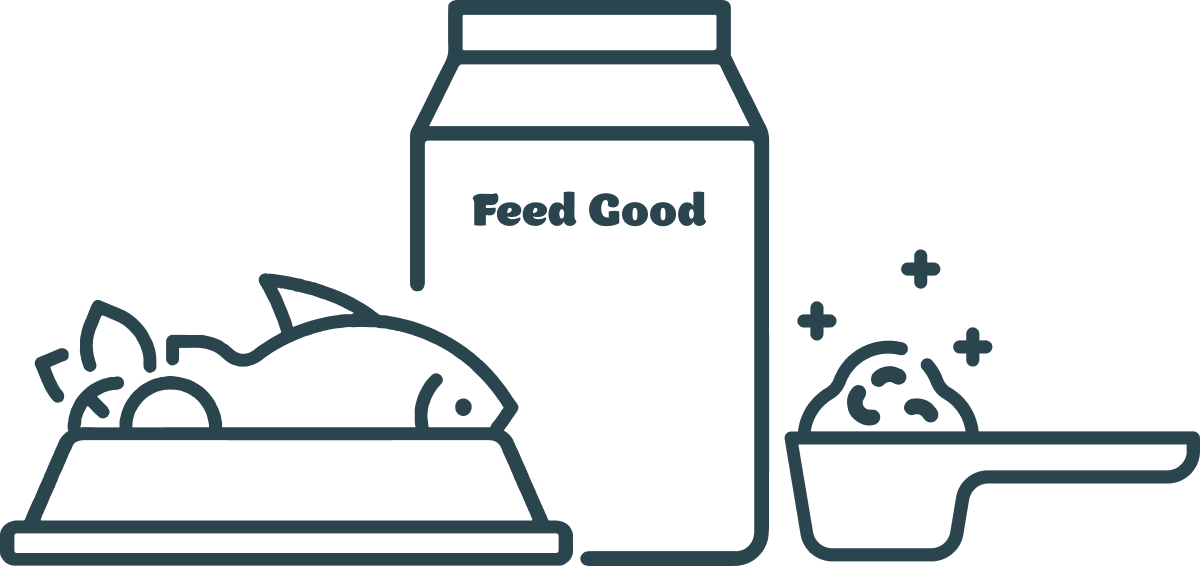
Give your pets meals a boost by using Frontier Pets food as a topper or for occasional feeding. Add to your current feeding regime by adding 20% of the daily feeding amount to 80% of their current diet.
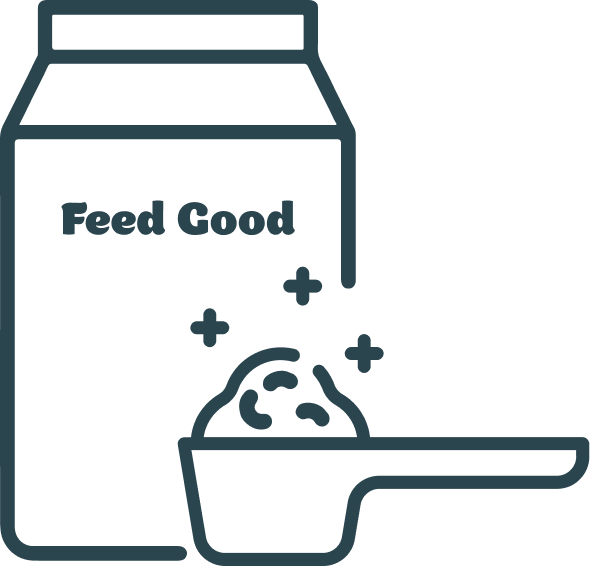
A must for fussy animals or those that want to feed a variety. Substitute 50% of your pet’s current diet with Frontier Pets food. Either as one meal a day or with the existing food.
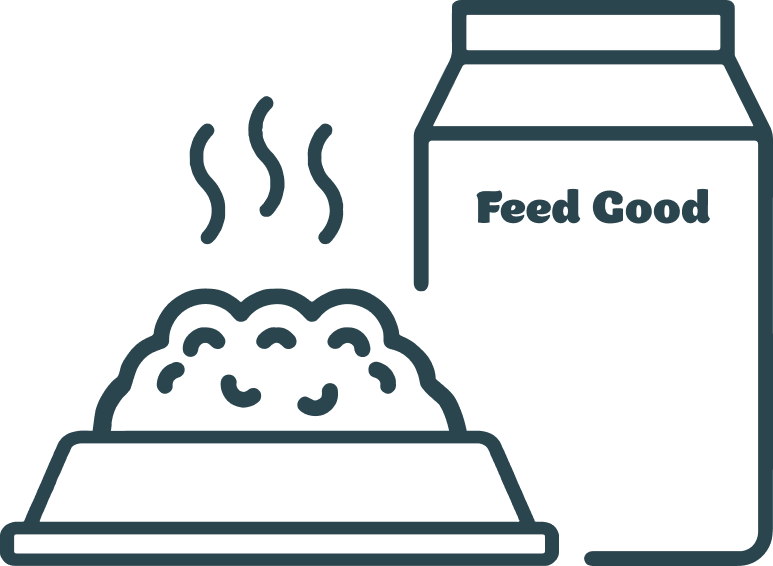
Over-the-top nutrition with ultra-convenience. Feed Frontier Pets food 100% of the time. Change varieties often to maintain interest.
How to transition to raw pet food
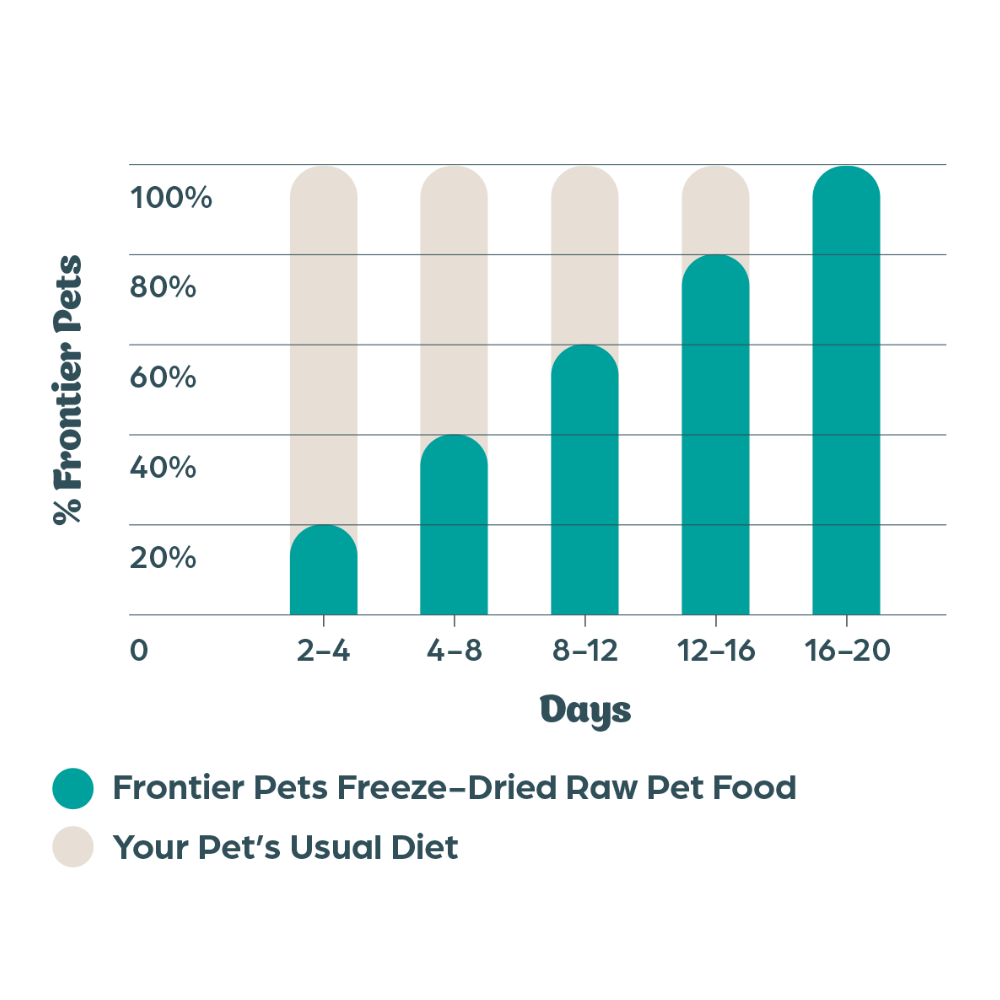
If your pet has been on a diet of dry kibble and/or processed wet food, it’s important to transition gradually to raw feeding as a complete balanced meal.* Raw food is digested differently to processed food. Transitioning too quickly to raw feeding can cause stomach upset.
Similarly, if your pet is used to dry kibble or canned food, they may be fussy with raw food at first, so gradually introducing raw food will help their taste buds adjust.
Start with 20% Frontier Pets Raw Freeze-Dried food and 80% of your pet’s ‘usual’ food. Feed 20/80 ratio for 2-4 days, and if there are no major concerns, adjust the ratio to 40/60 for the next 2-4 days.
Increase Frontier Pets by 20% every 2-4 days until you are feeding 100% Frontier Pets food as a complete balanced meal.
This guide only follows general Vet advice for transitioning to raw feeding. However, every pet is unique, and they may transition at a different pace. If you have any concerns, contact us at or consult your Vet or Animal Health Specialist.
*Frontier Pets Freeze-Dried Raw Pet Food can be used as a complete balanced meal for 100% raw feeding, or as a Topper for a raw nutrient boost to their usual meals. See our Feeding Guide for details.
*FEEDING TIP: You can wait for all the water to be absorbed, or you can give your pet the bowl while there is still some water remaining. It makes no difference to the nutritional quality of the meal. And your pet will still get the right hydration as they will usually drink up any delicious excess water whilst eating their dog food or cat food.
So far we've spent
ON SUSTAINABLY FARMED PRODUCE
Frequently Asked Questions
The amount you should feed your dog depends on factors like age, weight, activity level, and breed. Generally, following the feeding guidelines on the dog food packaging and adjusting as needed based on your dog's individual needs is recommended.
You should avoid feeding your dogs grains like barley, corn, oats, rice, rye, or wheat, along with grain by-products such as bran, gluten, hull, flour, or starch and excessive sugars or salt. Dog foods with artificial preservatives, colors, and flavors should also be avoided. Opt for high-quality ingredients and always consult your vet for personalised advice.
A raw food diet for dogs, often referred to as a raw diet or BARF (Biologically Appropriate Raw Food), involves feeding dogs uncooked ingredients such as raw meat, bones, fruits, and vegetables. The idea behind this diet is to mimic what a dog's ancestors would have eaten in the wild, before the advent of commercial pet foods.
Frontier Pet's food is crafted from free-range meat and freeze-dried organic fruits and vegetables. It provides the benefits of raw food without the need for freezer space or concerns about contamination, making it a convenient and safe option for your dog.
How often you should change your dog's food depends on various factors such as their age, health status, and dietary needs. In general, if your dog is thriving on their current diet, there may not be a need to change it. However, if they show signs of being fussy with their food or develop allergies or sensitivities, you may need to consider changing their food.
Some dogs may benefit from rotating between different types or flavors of food to ensure they receive a variety of nutrients and to prevent them from becoming bored with their diet. However, abrupt changes in diet can sometimes upset their stomach, so any changes should be made gradually over several days to allow their digestive system to adjust.
Consulting with your veterinarian can provide valuable guidance on the best feeding regimen for your dog based on their individual needs and circumstances.

